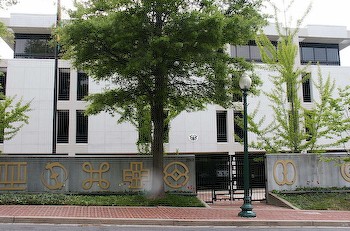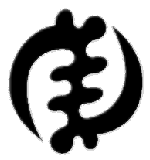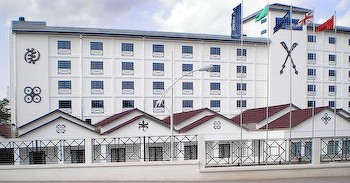|
  Adinkra are visual symbols,
originally created by the Akan of Ghana and the Gyaman of Cote
d'Ivoire in West Africa, that represent concepts or aphorisms. Adinkra are used extensively in fabrics, pottery, logos and
advertising. They are incorporated into walls and other
architectural features. Fabric adinkra are often made by woodcut
sign writing as well as screen printing. Adinkra symbols appear
on some traditional akan gold weights. The symbols are also
carved on stools for domestic and ritual use. Tourism has led to
new departures in the use of the symbols in such items as T
shirts and jewelry. Adinkra are visual symbols,
originally created by the Akan of Ghana and the Gyaman of Cote
d'Ivoire in West Africa, that represent concepts or aphorisms. Adinkra are used extensively in fabrics, pottery, logos and
advertising. They are incorporated into walls and other
architectural features. Fabric adinkra are often made by woodcut
sign writing as well as screen printing. Adinkra symbols appear
on some traditional akan gold weights. The symbols are also
carved on stools for domestic and ritual use. Tourism has led to
new departures in the use of the symbols in such items as T
shirts and jewelry.
The
symbols have a decorative function but also represent objects
that encapsulate evocative messages that convey traditional
wisdom, aspects of life or the environment. There are many
different symbols with distinct meanings, often linked with
proverbs. In the words of Anthony Appiah, they were one of the
means in a pre-litrate society for "supporting the transmission
of a complex and nuanced body of practice and belief".
 African oral tradition dates
the arrival of adinkra among the Akan to the end of the 1818 Asante-Gyaman War. However, the Englishman Thomas Edward Bowdich
collected a piece of adinkra cloth in 1817, which demonstrates
that adinkra art existed before the traditional starting date. Bowdich obtained this cotton cloth in Kumasi, a city in
south-central Ghana. The patterns were printed using carved
calabash stamps and a vegetable-based dye. The cloth features
fifteen stamped symbols, including nsroma (stars), dono ntoasuo
(double Dono drums), and diamonds. It is now in the British
Museum. African oral tradition dates
the arrival of adinkra among the Akan to the end of the 1818 Asante-Gyaman War. However, the Englishman Thomas Edward Bowdich
collected a piece of adinkra cloth in 1817, which demonstrates
that adinkra art existed before the traditional starting date. Bowdich obtained this cotton cloth in Kumasi, a city in
south-central Ghana. The patterns were printed using carved
calabash stamps and a vegetable-based dye. The cloth features
fifteen stamped symbols, including nsroma (stars), dono ntoasuo
(double Dono drums), and diamonds. It is now in the British
Museum.
The next oldest piece of adinkra textile was sent in 1825 from
the Elmina Castle to the Royal Cabinet of Curiosities in The
Hague, in response to an assignment from Major F. Last, who was
appointed temporary Commander of Dutch possessions along the
Guinea Coast. He probably had the cloth commissioned for King
William I, which would explain why the Dutch coat of arms is in
the centre. The other motifs are typical of the older adinkras.
It is now on display in the National Museum of Ethnology in Leiden.
 Adinkra cloths were
traditionally only worn by royalty and spiritual leaders for
funerals and other special occasions. They are now worn by
anyone, stylishly wrapped around women or men on any special
occasion. In the past they were hand printed on undyed, red,
dark brown or black hand-woven cotton fabric depending on the
occasion and the wearer's role; nowadays they are frequently
mass-produced on brighter coloured fabrics. Adinkra cloths were
traditionally only worn by royalty and spiritual leaders for
funerals and other special occasions. They are now worn by
anyone, stylishly wrapped around women or men on any special
occasion. In the past they were hand printed on undyed, red,
dark brown or black hand-woven cotton fabric depending on the
occasion and the wearer's role; nowadays they are frequently
mass-produced on brighter coloured fabrics.
The present centre of
traditional production of adinkra cloth is Ntonso, 20 km
northwest of Kumasi. Dark Adinkra aduro pigment for the stamping
is made there, by soaking, pulverizing, and boiling the inner
bark and roots of the baobab tree (Adansonia digitata, known as Badie) in water over a wood fire. Once the dark colour is
released, the mixture is strained, and then boiled for several
more hours until it thickens. The stamps are carved out of the
bottom of a calabash piece. They measure between five and eight
centimetres square. They have a handle on the back, and the
stamp itself is slightly curved, so that the dye can be put on
with a rocking motion.
|